Quick Answer
A steep grade for hiking refers to a trail with a significant incline, requiring more effort and skill to ascend. It’s essential to understand the steepness of a trail to adequately prepare and safely navigate challenging terrain.
Discover what defines a steep grade for hiking and uncover the secrets to conquering challenging trails like a pro. Read on to explore the key factors and tips for mastering steep terrain on your next adventure.
When it comes to hiking, understanding the difficulty level of a trail is essential for a safe and enjoyable experience. One of the factors that determine the difficulty of a trail is its steepness or grade. But what exactly is a steep grade for hiking?
A steep grade is usually measured and described in a percentile grade, which varies depending on the length and angle of the trail. Generally, a trail with a grade of 5-18% and a maximum of 35% is considered Class 2 and can be challenging for some hikers. As the out slope of the trail increases past 15%, the trail may start to feel off-camber, making it more difficult to hike.
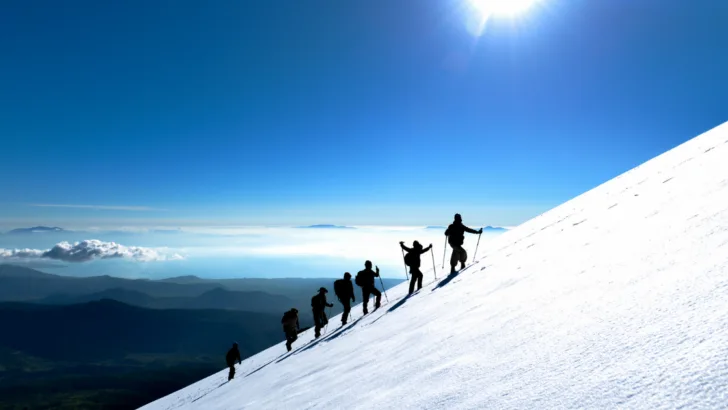
Understanding what a steep grade is and how it affects the difficulty of a trail is crucial for hikers to choose the right trail for their skill level and avoid injuries. In this article, I will explore what a steep grade is, why it’s important to understand it, how to choose a hike with the right steepness, and tips for hiking on steep trails.
Key Takeaways
- A steep grade for hiking is usually measured and described in a percentile grade, which varies depending on the length and angle of the trail.
- Understanding the steepness of a trail is crucial for hikers to choose the right trail for their skill level and avoid injuries.
- To hike on steep trails safely and comfortably, hikers should choose the right gear, take breaks, and use proper hiking techniques.
What is a Steep Grade for Hiking?
As a hiker, it’s essential to understand what a steep grade is, as it can affect your hiking experience and safety. In general, a steep grade refers to the slope or incline of a trail. It is usually measured in degrees or as a percentage of elevation gain over a certain distance.
According to hiking experts, a trail with a grade of 0-5 degrees is considered flat or easy. A grade of 6-10 degrees is moderate, while 11-15 degrees is somewhat steep. A grade of 16-30 degrees is steep, and anything over 30 degrees is considered very steep.
It’s worth noting that the difficulty of a trail not only depends on its grade but also on other factors such as distance, elevation gain, and terrain. For instance, a short but very steep trail can be more challenging than a longer but less steep one.
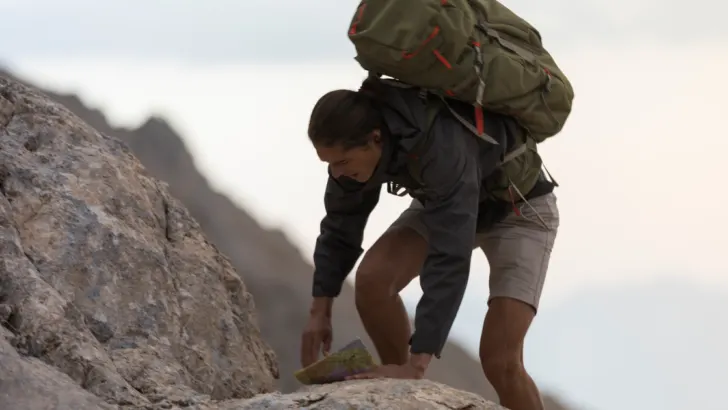
When hiking on a steep trail, it’s essential to be prepared physically and mentally. You should have adequate fitness and stamina to handle the climb, wear appropriate hiking shoes with good traction, and use trekking poles to provide additional support and stability.
In conclusion, understanding what a steep grade is in hiking is crucial for planning and executing a safe and enjoyable hiking adventure. By knowing the grade of a trail, you can determine whether it’s suitable for your fitness level and experience and take the necessary precautions to ensure a successful hike.
Explain Why It’s Important to Understand Steep Grades When Hiking
As a hiker, it’s essential to understand what a steep grade is and how it affects your hike. Knowing the terrain you’re about to hike on can help you prepare physically and mentally for the challenges you might face. Here are a few reasons why understanding steep grades is important:
1. Safety
Hiking on steep grades can be an exhilarating adventure, but it’s important to approach it with caution and preparedness. As someone who has experienced the thrill and challenges of steep trails, I understand the significance of knowing the difficulty level before embarking on any hike. It not only ensures your safety but also enhances your overall hiking experience.
One crucial aspect of assessing the difficulty level is understanding the steepness of the trail. Steep grades can present unique challenges, including loose rocks, slippery surfaces, and the potential for sudden changes in terrain. By being aware of the trail’s steepness, you can anticipate and navigate these obstacles with confidence and precision.
To gather information about the trail’s steepness, you can refer to hiking guides, trail maps, or online resources that provide details on elevation gain and trail gradients. These resources often classify trails into difficulty levels, ranging from easy to strenuous, based on the steepness and other factors.
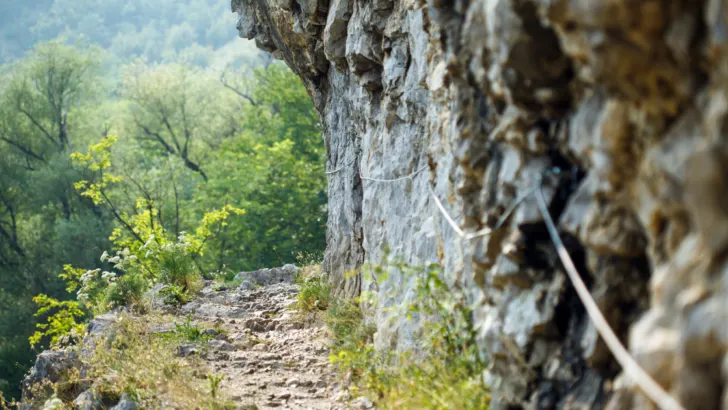
Equally important is having the necessary gear and skills to handle steep hikes. Steep trails demand sturdy hiking boots with excellent traction to ensure stability on uneven surfaces. Trekking poles can provide extra support and balance, especially during steep ascents and descents. It’s also crucial to pack essential safety items such as a first aid kit, extra water, and appropriate clothing layers.
Additionally, acquiring the skills and techniques specific to hiking on steep grades is invaluable. Familiarize yourself with proper foot placement and body positioning to maintain balance and minimize strain on your joints. Learning how to use your trekking poles effectively can provide added stability and reduce the impact on your legs.
Furthermore, consider the overall fitness level required for steep hikes. Regular cardiovascular exercise, strength training, and endurance-building activities can enhance your stamina and ensure you’re physically prepared for the challenges ahead.
By thoroughly researching and understanding the steepness of the trail, you can make informed decisions about the hikes you undertake. This knowledge allows you to plan accordingly, equip yourself with the right gear, and develop the necessary skills to navigate steep grades safely and confidently.
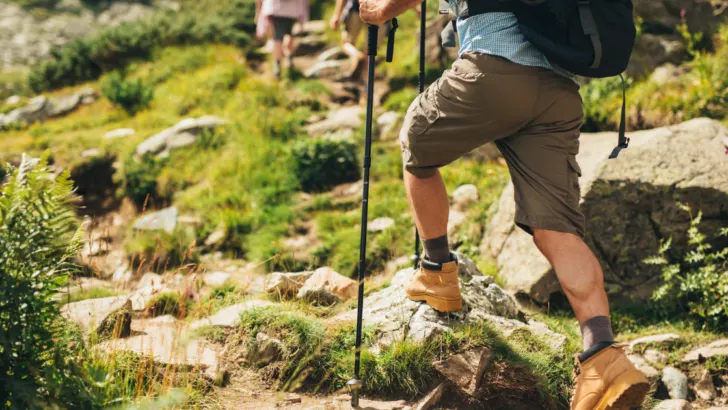
Remember, the adventure of hiking on steep trails can be immensely rewarding, but it’s crucial to prioritize your safety and be well-prepared. By embracing the beauty of steep terrains with the right knowledge and mindset, you can embark on unforgettable journeys that push your limits while respecting the power and challenges of nature.
2. Physical Preparation
Embarking on a hike along steep grades is a thrilling endeavor that pushes both your physical and mental limits. As an avid hiker who has conquered challenging ascents, I understand the importance of preparing your body for the increased exertion and energy required on steep trails.
Knowing the steepness of the trail ahead of time provides invaluable insight into the level of physical fitness and endurance needed for a successful hike. It allows you to tailor your training and prepare your body for the demanding inclines that lie ahead.
To strengthen your body and build the necessary endurance, incorporating exercises that focus on leg and core strength is crucial. These exercises target the specific muscle groups needed to tackle steep grades and maintain stability throughout your hike.
- Lunges: Performing lunges help strengthen the quadriceps, hamstrings, and glutes, which are essential for powering through steep ascents. Start with stationary lunges and gradually progress to walking lunges to simulate the uphill motion.
- Squats: Squats are excellent for building leg strength and stability. Focus on proper form, ensuring your knees are aligned with your toes and your weight is evenly distributed. As you progress, you can add weights or variations such as jump squats to increase intensity.
- Step-ups: Step-ups mimic the motion of climbing uphill and engage the same muscles used during steep ascents. Find a sturdy platform or use a step bench, and step up with one foot at a time, gradually increasing the height or adding weights to intensify the exercise.
- Planks: Core strength is vital for maintaining balance and stability on steep grades. Incorporate planks into your routine to strengthen your abdominal muscles, lower back, and obliques. Aim to hold the plank position for at least 30 seconds and gradually increase the duration as you progress.
- Cardiovascular exercises: Building cardiovascular endurance is essential for sustained energy during steep hikes. Incorporate activities such as running, cycling, or stair climbing into your routine to improve your cardiovascular fitness.
In addition to specific exercises, it’s essential to incorporate regular hikes on gradually steeper terrains into your training regimen. This allows your body to acclimate to the demands of uphill climbs and prepares your muscles for the challenges ahead. Start with moderate inclines and progressively tackle steeper trails as your fitness level improves.

Remember to listen to your body and avoid overexertion during training. Allow for rest days to promote muscle recovery and prevent injuries. It’s also important to maintain a well-balanced diet and stay hydrated to support your body’s overall fitness and performance.
By dedicating time and effort to training, you’ll develop the strength, endurance, and resilience necessary to conquer steep grades with confidence. Your body will adapt to the challenges, allowing you to fully embrace the breathtaking landscapes and rewarding experiences that steep hiking trails have to offer.
3. Mental Preparation
Embarking on a hike along steep grades not only tests your physical strength but also challenges your mental resilience. As an experienced hiker who has conquered demanding ascents, I understand the importance of mental preparedness when facing the trials of steep trails.
Knowing the difficulty level of the hike ahead of time plays a crucial role in mentally preparing yourself for the challenges that await you. It allows you to set realistic expectations and develop a positive mindset, ensuring that you’re ready to tackle the steep inclines with confidence.
One effective technique for mental preparation is visualization. Take a moment to envision yourself on the trail, ascending the steep grades with determination and grace. Picture the scenery, the rugged terrain, and the obstacles you may encounter. Visualize yourself overcoming each challenge, step by step, and reaching the summit with a sense of accomplishment.

During this visualization process, focus on positive self-talk. Encourage yourself, affirming your capabilities and strength. Remind yourself of past hiking accomplishments and draw inspiration from those experiences. Embrace the belief that you have the necessary skills and resilience to conquer the steep inclines that lie ahead.
It’s also helpful to break down the hike into smaller sections or milestones. Mentally prepare yourself to tackle each segment individually, rather than becoming overwhelmed by the entire trail. By setting mini-goals along the way, you can maintain a sense of progress and celebrate each achievement, fueling your motivation and determination.
Mindfulness techniques can also support your mental preparedness. Practice being fully present at the moment, focusing on your breath and the sensations in your body as you ascend the steep trail. Embrace the challenges as opportunities for personal growth and self-discovery. Engage your senses by appreciating the beauty of the surroundings, the sound of the wind, and the scent of the wilderness.
It’s important to cultivate a positive and adaptable mindset during the hike. Understand that steep grades may require adjustments to your pace or technique. Be flexible and open to adapting your approach as needed, without letting setbacks or moments of fatigue deter your determination.
Remember, hiking on steep grades not only tests your physical endurance but also builds mental strength and resilience. By mentally preparing yourself, visualizing success, and embracing the challenges as part of the journey, you’ll be better equipped to tackle the steep inclines with confidence and enjoy the rewards of conquering them.

So, take a deep breath, focus your mind, and step onto the trail knowing that you possess the mental fortitude to overcome any obstacle that comes your way. Let the steep grades become opportunities for personal growth, pushing your limits, and embracing the exhilaration of conquering new heights.
4. Time Management
Managing your time effectively while hiking on steep grades is essential for a successful and enjoyable outdoor adventure. As an experienced hiker who has navigated challenging trails, I recognize the significance of understanding the steepness of the trail to optimize your time management skills.
It’s important to acknowledge that hiking on steep grades naturally requires more time and effort compared to traversing flat or gently sloping trails. The elevation gain and the physical exertion involved demand careful consideration when planning your route and scheduling your hike.
By assessing the difficulty level of the hike ahead of time, you gain valuable insights into the estimated time required to complete the trail. Take into account factors such as the total distance, elevation gain, trail conditions, and your own hiking pace. This knowledge allows you to plan your itinerary and allocate sufficient time for the journey, avoiding the stress of rushing or feeling pressed for time.

When mapping out your route, consider any potential obstacles or challenges posed by the steep grades. Factor in the additional time required for rest breaks, hydration, and capturing the breathtaking views along the way. Keep in mind that hiking on steep terrain can be physically demanding, and allowing ample time for rest and rejuvenation is crucial for maintaining your energy levels and preventing fatigue.
It’s important to be realistic in your time estimates, considering your own fitness level and hiking experience. If you’re new to hiking or embarking on a particularly challenging trail, it’s advisable to allocate extra time to ensure a comfortable pace and avoid unnecessary stress.
Additionally, staying informed about the sunset and sunrise times is vital, particularly for longer hikes or multi-day treks. Factor in the available daylight hours to ensure you have ample time to complete your hike and reach your desired camping or resting spot before darkness sets in.
Always prioritize safety and be prepared for unexpected delays or changes in weather conditions. Give yourself a buffer of extra time in case of unforeseen circumstances, such as trail closures, inclement weather, or encountering unexpected challenges along the way.
By understanding the steepness of the trail and effectively managing your time, you can optimize your hiking experience. Embrace the opportunity to immerse yourself in the journey, allowing for moments of reflection, appreciation of nature’s beauty, and the flexibility to adapt your plans as needed.
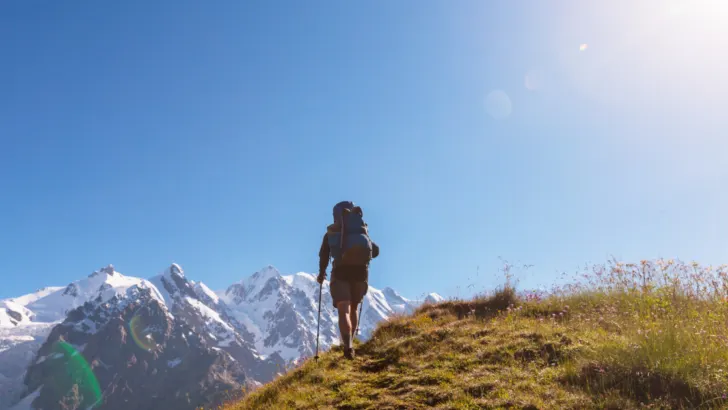
Remember, hiking is not solely about reaching the destination but also about savoring each step along the way. By strategically planning your route, allocating sufficient time, and embracing the adventure, you can make the most of your hiking experience on steep grades while ensuring a safe and rewarding journey.
In conclusion, understanding steep grades when hiking is crucial for your safety, physical and mental preparation, and time management. Take the time to research the difficulty level of the hike you’re about to embark on and prepare yourself accordingly.
What Is a Steep Grade?
As someone who loves hiking, I know that the steepness of a trail can make all the difference in how challenging and enjoyable the hike is. But what exactly is a steep grade?
Discuss the Different Ways to Measure Steepness, Such As Percent Grade and Rise Over Run
Steepness is usually measured in terms of percent grade, which is the amount of vertical rise per 100 units of horizontal distance. For example, a 15% grade means that for every 100 feet you travel horizontally, you will climb 15 feet vertically. Another way to measure steepness is rise over run, which is the vertical distance divided by the horizontal distance.
Provide Examples of Different Steep Grades, Such As 15%, 30%, and 60%
A 15% grade is considered moderately steep and may be challenging for beginners. A 30% grade is very steep and will require a lot of effort and energy to climb. A 60% grade is extremely steep and may require specialized equipment or advanced technical skills to navigate safely.

Explain How Steepness Can Affect the Difficulty of a Hike
The steepness of a trail can have a significant impact on the difficulty of a hike. A steep grade will require more effort and energy to climb, which can be physically demanding and exhausting. It can also increase the risk of slips, falls, and other injuries, especially if the trail is rocky or slippery. Additionally, steep grades can be mentally challenging, as they can be intimidating and require a lot of focus and concentration to navigate safely.
In conclusion, understanding what a steep grade is and how it affects the difficulty of a hike is essential for any hiker. By knowing how to measure steepness, recognizing different grades, and understanding the challenges they pose, hikers can better plan their routes and prepare themselves for a safe and enjoyable adventure.
How to Choose a Hike with the Right Steepness for You
When planning a hike, it’s important to choose a trail with the right steepness for your fitness level and experience. Here are some tips to help you choose a hike that will challenge you without pushing you too far:
Consider Your Fitness Level and Experience When Choosing a Hike
When choosing a hike, it’s important, to be honest with yourself about your fitness level and experience. If you’re new to hiking or haven’t hiked in a while, it’s best to start with shorter, easier hikes with lower grades. As you build up your fitness and experience, you can gradually increase the steepness of the trails you tackle.

Talk to Other Hikers About Their Experiences on Different Trails
Talking to other hikers can be a great way to get an idea of the steepness of different trails. Ask other hikers about their experiences on trails you’re interested in, and find out how steep the trail is and whether it’s suitable for your fitness level and experience. You can also ask for recommendations for trails with a similar steepness to ones you’ve already hiked.
Read Trail Descriptions Carefully to Get an Idea of the Steepness of the Hike
When planning a hike, it’s important to read trail descriptions carefully to get an idea of the steepness of the hike. Look for information on the grade of the trail, which is usually expressed as a percentage. A 10% grade, for example, means that the trail rises 10 feet for every 100 feet of horizontal distance. A trail with a higher grade will be steeper and more challenging than one with a lower grade.
By considering your fitness level and experience, talking to other hikers, and reading trail descriptions carefully, you can choose a hike with the right steepness for you. Remember to start with shorter, easier hikes and gradually build up to more challenging trails as you gain experience and fitness.
Tips for Hiking on Steep Trails
Take Your Time and Don’t Rush
When hiking on steep trails, it’s important to pace yourself and not rush. Take small steps and focus on your balance. This will help you conserve energy and avoid injury. If you feel yourself getting tired, take a break and rest. Don’t push yourself too hard, especially if you’re not used to hiking on steep trails.
Use Trekking Poles for Support
Trekking poles are a great tool for hiking on steep trails. They provide extra support and help distribute your weight more evenly. When using trekking poles, make sure they are adjusted to the correct height for your body. Use them to help you maintain your balance and take pressure off your knees and ankles.

Hike with a Buddy
Hiking with a buddy is always a good idea, but it’s especially important when hiking on steep trails. A buddy can help you stay motivated, provide extra support, and help you if you get into trouble. Make sure you both have the proper gear and know the trail before you start.
Be Aware of Your Surroundings and Watch Out for Hazards
When hiking on steep trails, it’s important to be aware of your surroundings and watch out for hazards. Look for loose rocks or gravel, steep drop-offs, and other potential dangers. Stay on the trail and avoid shortcuts or alternate routes. If you’re not sure about a section of the trail, take your time and proceed with caution.
Remember, hiking on steep trails can be challenging, but with the right preparation and mindset, it can also be incredibly rewarding. Take your time, use the right gear, and stay aware of your surroundings. Happy hiking!
Different Types of Trails That Have Steep Grades
When it comes to hiking, there are different types of trails that can be classified by their level of difficulty. Some trails have steep grades that require more effort and skill to navigate. In this section, I will discuss three types of trails that have steep grades: Technical Trails, Scrambles, and Climbs.
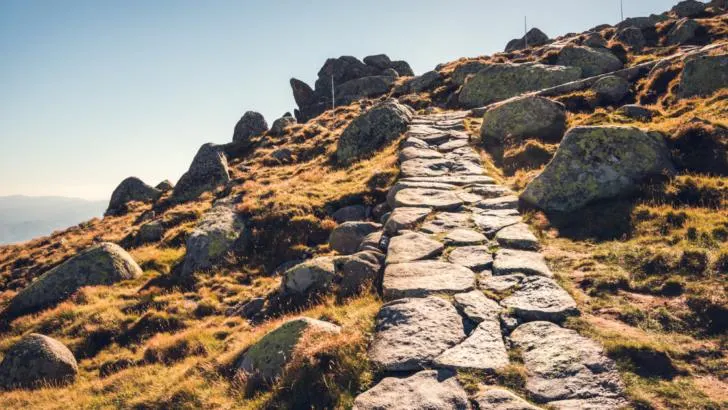
Technical Trails
Technical trails require a high level of skill and experience to navigate. These trails often have steep grades, loose rocks, and narrow paths. Technical trails may also require the use of ropes or other equipment to navigate safely. Some examples of technical trails include:
- The Half Dome Cables Route in Yosemite National Park
- The Knife Edge on Katahdin in Baxter State Park
- The Bright Angel Trail in Grand Canyon National Park
If you plan to hike a technical trail, it is important to have the necessary skills and equipment to do so safely. It is also a good idea to hike with a partner or group for added safety.
Scrambles
Scrambles are trails that require some basic climbing skills but are not as technical as some of the more difficult trails. These trails often have steep grades and loose rocks and require using hands and feet to navigate. Some examples of scrambles include:
- The Beehive Trail in Acadia National Park
- The Precipice Trail in Acadia National Park
- The Franconia Ridge Trail in the White Mountains of New Hampshire

If you are planning to hike a scramble, it is important to have some basic climbing skills and to be comfortable with exposure. It is also a good idea to hike with a partner or group for added safety.
Climbs
Climbs are trails that require advanced climbing skills and equipment. These trails often have steep grades and exposed areas, and require the use of ropes and other equipment to navigate safely. Some examples of climbs include:
- The Mountaineer’s Route on Mount Whitney in California
- The Grand Teton in Grand Teton National Park
- The Liberty Ridge on Mount Rainier in Washington
If you are planning to hike a climb, it is important to have advanced climbing skills and to be comfortable with exposure. It is also a good idea to hike with an experienced partner or guide for added safety.

Overall, hiking trails with steep grades can be challenging but rewarding experiences. It is important to have the necessary skills and equipment to navigate these trails safely. Always remember to hike with a partner or group, and to be aware of your surroundings at all times.
Different Factors That Can Affect the Steepness of a Trail
Terrain
The terrain of a trail is one of the most significant factors that can affect its steepness. Some surfaces make it much harder to go up than others. For instance, a rocky, uneven trail will be more challenging to climb than a smooth, flat trail. Similarly, trails that have a lot of loose gravel or sand can be difficult to navigate, especially if you don’t have proper footwear. Additionally, the width of the trail can also impact the steepness. Narrow trails can feel steeper than wider ones, even if the actual grade is the same.
Climate
The climate of an area can also affect the steepness of a trail. In hot and humid weather, it can be more challenging to climb steep trails due to the increased exertion and potential for dehydration. Conversely, cold weather can make steep trails more challenging due to the potential for ice and snow on the ground. It’s essential to consider the climate of an area when planning a hike and to prepare accordingly.
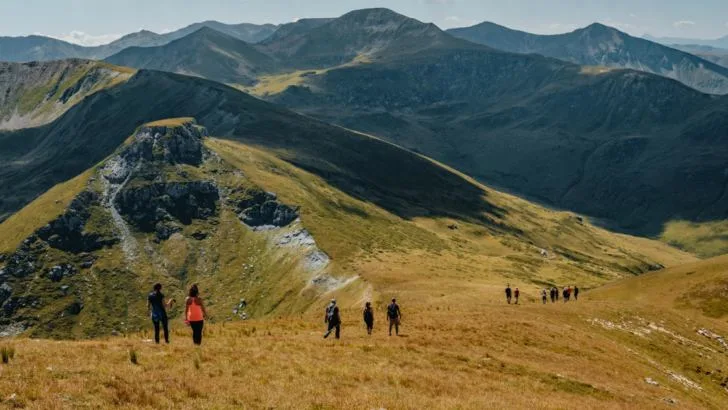
Season
The season can also impact the steepness of a trail. In the spring, trails may be steeper due to runoff from melting snow and ice. Similarly, in the fall, trails may be covered in leaves that can make it difficult to see the terrain and increase the risk of slipping. Additionally, some trails may be closed during certain seasons due to weather conditions or maintenance, so it’s essential to check trail conditions before embarking on a hike.
Overall, there is no general consensus behind what is a steep grade in hiking. The steepness of a trail can depend on many factors, including terrain, climate, and season. It’s important to consider these factors when planning a hike to ensure that you are adequately prepared for the trail’s steepness.
Tips for Avoiding Injuries on Steep Trails
As someone who has hiked on steep trails before, I know how challenging it can be to keep yourself safe and avoid injuries. Here are a few tips that I’ve found to be helpful:
Wearing Proper Footwear
Selecting appropriate footwear is paramount when venturing onto steep hiking trails. As an avid hiker who has explored various terrains, I understand the significance of choosing the right shoes or boots to ensure optimal traction, support, and comfort, minimizing the risk of slips and falls.
When selecting footwear for steep trails, there are several key factors to consider:
- Sturdy Sole and Traction: Look for shoes or boots with a durable sole that offers excellent grip and traction. A well-designed outsole with deep lugs or a specialized rubber compound can enhance traction, providing stability on uneven and slippery surfaces. This feature becomes especially crucial on steep inclines where secure footing is essential.
- Proper Fit and Comfort: Ensuring your footwear fits properly is vital for a comfortable hiking experience. Ill-fitting shoes can lead to discomfort, blisters, and even foot pain. Take the time to try on different brands and sizes, allowing enough room for your toes to wiggle while maintaining a snug fit around the heel and midfoot. Additionally, consider the specific shape and width of the shoe, as this can significantly impact comfort and stability on steep terrain.
- Ankle Support: Hiking on steep trails places additional strain on your ankles, making ankle support an important consideration. High-top hiking boots with sturdy ankle support can provide stability and reduce the risk of twisting or spraining your ankle. However, it’s essential to find a balance between ankle support and flexibility based on your comfort preferences and the demands of the trail.
- Breathability and Waterproofing: Depending on the climate and conditions of the trail, consider the breathability and waterproofing features of your footwear. Breathable materials such as mesh panels or breathable membranes can help keep your feet cool and dry while waterproofing features such as Gore-Tex or waterproof-treated leather can protect your feet from moisture and wet environments.
- Hiking Socks: Pairing your footwear with suitable hiking socks is equally important. Choose moisture-wicking socks that help keep your feet dry and minimize the risk of blisters. Look for socks with cushioning in key areas, such as the heel and ball of the foot, to provide extra comfort and reduce impact during descents. Consider the thickness and material of the socks based on the climate and season to ensure optimal comfort and performance.

Remember, every foot is unique, and what works for one person may not work for another. It’s essential to try on different brands and styles, allowing for personal preference and ensuring the best fit for your feet. Take the time to break in your new footwear before embarking on steep hikes to ensure maximum comfort and minimize the risk of discomfort or foot-related issues.
By selecting footwear with a sturdy sole, proper fit, ankle support, and breathability, and pairing them with appropriate hiking socks, you can confidently tackle steep trails while minimizing the risk of slips, blisters, and discomfort. Prioritize your safety and comfort by investing in quality footwear that will support you throughout your hiking adventures.
Staying Hydrated
Ensuring proper hydration is paramount when embarking on any hiking trail, but it becomes even more crucial when tackling steep terrain. As an experienced hiker, I understand the significance of maintaining optimal hydration levels to prevent fatigue, dizziness, and other symptoms that can compromise safety and well-being. Here are some valuable tips to help you stay hydrated on steep trails:
- Carry Sufficient Water: It’s essential to bring an ample water supply with you on your hike. As a general guideline, aim to drink at least 8 ounces of water every 20 minutes during your hike. The exact amount may vary depending on factors such as weather conditions, trail difficulty, and personal hydration needs. Consider using a hydration bladder or carrying multiple water bottles to conveniently access water throughout your hike.
- Filtered Water Options: If you’re hiking in an area without access to clean water sources, consider carrying a hydration pack or water bottle with a built-in filter. These filtration systems can help you safely consume water from natural sources such as streams or rivers, providing you with a continuous supply of clean drinking water. However, it’s essential to research and familiarize yourself with the water sources in the area to ensure their suitability for filtration.
- Hydrating Snacks: Alongside drinking water, incorporating hydrating snacks into your hiking provisions can be beneficial. Fruits and vegetables with high water content, such as watermelon, cucumber, oranges, or celery, can contribute to your overall hydration. These snacks provide essential electrolytes and can help replenish fluids lost through sweating. Pack these items in your backpack for convenient access and consumption during breaks.
- Electrolyte Balance: Remember that hydration is not just about water intake but also about maintaining a proper balance of electrolytes. Electrolytes, such as sodium, potassium, and magnesium, play a crucial role in regulating fluid balance and muscle function. Consider carrying electrolyte-enhanced drinks or electrolyte tablets to replenish these vital minerals during longer hikes or in hot and humid conditions.
- Plan and Monitor: Before setting off on your hike, assess the trail’s length, duration, and difficulty level. This information will help you plan your hydration strategy accordingly. Take into account factors such as weather conditions and anticipated exertion levels. Continuously monitor your body’s hydration cues, such as thirst and urine color, to ensure you stay adequately hydrated throughout the hike.
- Regular Hydration Breaks: Incorporate regular hydration breaks into your hiking routine. Take short breaks at intervals to rest, rehydrate, and evaluate your energy levels. These breaks allow you to assess your hydration status, replenish fluids, and gauge whether you need to adjust your pace or plan.

Remember, staying hydrated is a continuous effort. It’s crucial to prioritize hydration before, during, and after your hike. Don’t wait until you feel thirsty, as thirst is an early sign of dehydration. By proactively addressing your body’s fluid needs and following these tips, you can help ensure a safe and enjoyable hiking experience on steep trails.
Always prioritize your safety and be aware of the signs of dehydration. If you experience severe symptoms such as lightheadedness, confusion, or extreme fatigue, it’s crucial to find shade, rest, and seek assistance if needed. By maintaining proper hydration levels, you can optimize your performance, reduce the risk of injury, and fully enjoy the beauty of hiking on steep trails.
Conclusion
In conclusion, understanding what a steep grade is for hiking is crucial for a safe and enjoyable hiking experience. A steep grade can be defined as the slope or incline of a trail, measured in percentage or degrees. While the most widely accepted slope grade optimum for hiking is 5 percent, it can vary depending on factors such as fitness level, trail length, elevation gain, and terrain.
To prepare for hiking on steep grades, it’s important to assess your fitness level and choose trails that match your abilities. Training with exercises such as stair climbing, lunges, and squats can also help build strength and endurance. Additionally, using the right gear such as hiking boots with good traction and trekking poles can help improve stability and balance on steep terrain.
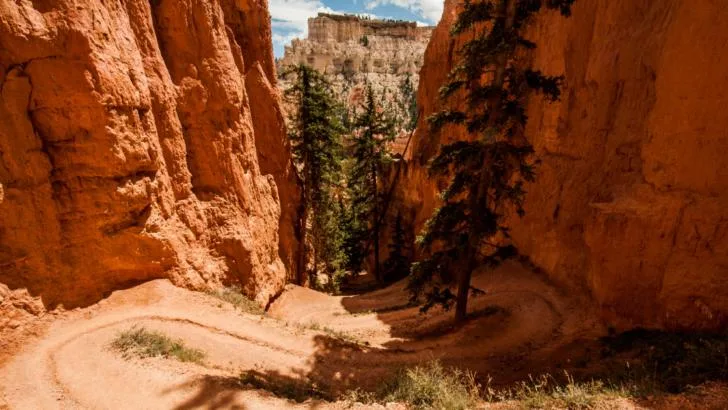
When hiking on steep grades, it’s essential to maintain a slow and steady pace, take breaks as needed, and watch your footing. It’s also important to be aware of the potential risks such as slips, falls, and exhaustion. Always carry a map, plenty of water and snacks, and a first aid kit.
In summary, hiking on steep grades can be a challenging and rewarding experience, but it’s important to be prepared and take the necessary precautions. You can safely conquer even the steepest trails by understanding what a steep grade is, assessing your fitness level, and using the right gear and techniques.
For those who are looking for a truly challenging hiking experience, unparalleled hiking is the way to go. These hikes typically have steep grades and require a high level of fitness. Read more on our detailed article ‘What is Unparalleled Hiking‘.
Resources
- https://americanhiking.org/hiking-resources/trail-difficulty-ratings/
- https://www.rei.com/learn/expert-advice/hiking-for-beginners.html
- https://www.thehikinglife.com/2013/03/choosing-right-trail/
Frequently Asked Questions
What is considered a steep incline for hiking?
A steep incline for hiking can be subjective and depend on the individual’s fitness level and experience. However, a 15% grade slope is generally considered too steep to hike. Most hikers prefer a trail with a grade of 5% or less.
What is the average grade percentage for hiking?
The average grade percentage for hiking can vary depending on the terrain and difficulty level of the trail. Typically, a moderate hiking trail will have a grade percentage ranging from 5% to 10%. However, more challenging trails can have a grade percentage of 15% or more.
What is the difficulty scale for mountain hiking?
The difficulty scale for mountain hiking is usually classified into five levels: easy, moderate, difficult, very difficult, and extreme. Each level is based on the trail’s length, elevation gain, terrain, and weather conditions. It’s important to assess your fitness level and experience before attempting a mountain hike.
What are some hiking milestones to aim for?
Hiking milestones can vary depending on the individual’s fitness level and experience. Some common milestones include hiking a certain distance, reaching a specific elevation gain, or completing a challenging trail. It’s important to set achievable goals and work towards them gradually.
Is 3000 ft elevation gain considered strenuous for hiking?
A 3000 ft elevation gain can be considered strenuous for hiking, especially if the trail has a steep grade and challenging terrain. It’s important to assess your fitness level and experience before attempting a hike with a significant elevation gain.
How do you calculate trail grades for hiking?
Trail grades for hiking can be calculated by dividing the total elevation gain by the total distance of the trail and multiplying it by 100. For example, if a trail has a total elevation gain of 500 feet over a distance of 2 miles, the grade would be 500/2 x 100 = 25%. There are also apps and websites that can calculate trail grades for you.
